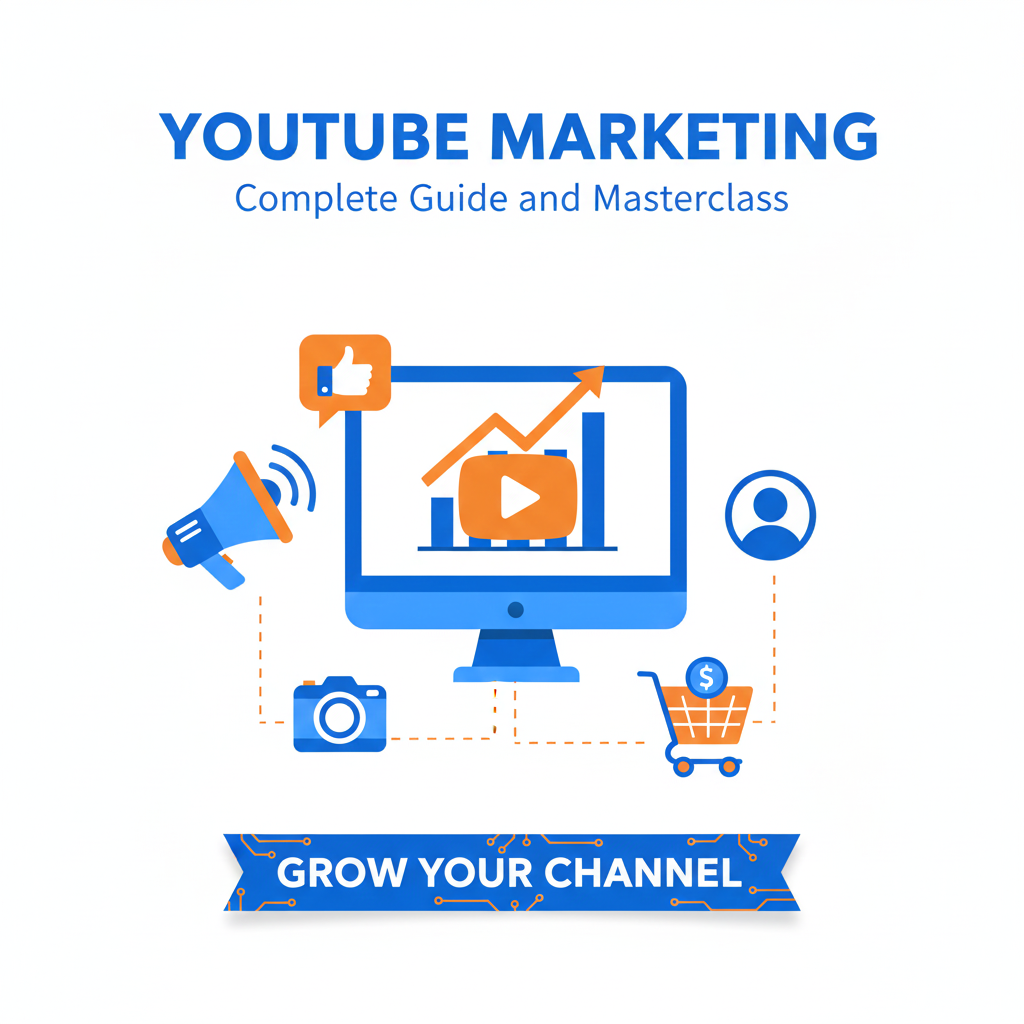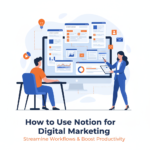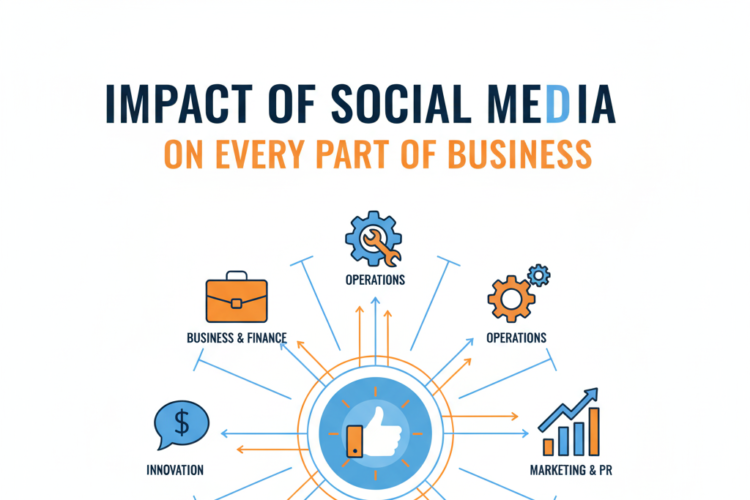
YouTube Marketing: Complete Guide and Masterclass
Introduction: Why YouTube Marketing Matters Now More Than Ever
YouTube is the world’s second-largest search engine and the second most visited website globally, with over 2.7 billion monthly active users. Every minute, 500 hours of video content are uploaded to the platform. For businesses, creators, and marketers, YouTube represents an unparalleled opportunity to reach audiences, build authority, drive traffic, and generate revenue.
Unlike fleeting social media posts, YouTube content has remarkable longevity. Videos can continue attracting views, subscribers, and conversions for years after publication. A well-optimized video created today might still be driving business results a decade from now—making YouTube one of the highest ROI marketing channels available.
This comprehensive masterclass will take you from YouTube marketing fundamentals to advanced strategies, covering everything you need to build a successful YouTube presence that drives real business results.
Part 1: YouTube Fundamentals and Strategy
Understanding the YouTube Ecosystem
The YouTube Algorithm
YouTube’s recommendation algorithm determines which videos get shown to viewers. Understanding how it works is crucial for success. The algorithm optimizes for:
Watch Time: The total minutes people spend watching your videos. This is the single most important factor. YouTube wants to keep people on the platform, so videos that keep viewers watching get promoted.
Click-Through Rate (CTR): The percentage of people who click on your video when they see it in search results, recommendations, or their homepage. This measures how compelling your thumbnail and title are.
Engagement Signals: Likes, comments, shares, and subscribes indicate that viewers found your content valuable. High engagement rates signal quality to the algorithm.
Session Time: How long viewers stay on YouTube after watching your video. If people watch your video then immediately leave YouTube, that’s a negative signal. If they watch several more videos, that’s positive.
Freshness: Newer videos get a temporary boost, but older videos can continue performing well if they maintain good metrics.
Viewer Satisfaction: YouTube conducts surveys asking viewers to rate videos. These satisfaction scores influence recommendations.
Types of YouTube Content
Understanding content categories helps you choose the right format:
Educational Content: How-to videos, tutorials, courses, and informational content. These often have the longest lifespan and highest search value.
Entertainment: Comedy, challenges, vlogs, storytelling. High engagement potential but often requires consistent personality-driven content.
Product Reviews and Unboxings: Purchasing decision content with strong commercial intent. Excellent for affiliate marketing and brand partnerships.
News and Commentary: Timely reactions to current events or industry news. High immediate interest but shorter relevance window.
Documentary/Long-Form: Deep dives into topics, case studies, or investigative content. High production value but strong loyalty building.
Live Streams: Real-time interaction with audiences. Excellent for community building and extended watch time.
Shorts: YouTube’s answer to TikTok—vertical, short-form content under 60 seconds. Different algorithm from regular videos but valuable for discovery.
Defining Your YouTube Marketing Strategy
Set Clear Objectives
Before creating content, define what YouTube success looks like for your business:
Brand Awareness: Building recognition and reach within your target market. Focus metrics: views, impressions, unique viewers, subscribers.
Lead Generation: Capturing contact information or moving viewers into your sales funnel. Focus metrics: click-through rates to landing pages, email signups, form completions.
Sales and Revenue: Direct monetization through YouTube ads, product sales, or affiliate commissions. Focus metrics: conversion rates, revenue per view, customer acquisition cost.
Authority and Thought Leadership: Establishing expertise and credibility in your industry. Focus metrics: engagement quality, mentions, backlinks, speaking opportunities.
Customer Education and Support: Reducing support costs while improving customer satisfaction. Focus metrics: support ticket reduction, customer satisfaction scores, product adoption rates.
Community Building: Creating a loyal audience that actively participates and advocates. Focus metrics: comments per view, returning viewer rate, member subscriptions.
Identify Your Target Audience
Create detailed viewer personas:
Demographics: Age range, gender, location, income level, education, occupation.
Psychographics: Values, interests, lifestyle, challenges, aspirations, content consumption habits.
YouTube Behavior: What do they already watch on YouTube? Which channels do they subscribe to? When are they most active? What devices do they use?
Pain Points and Goals: What problems are they trying to solve? What knowledge gaps do they have? What outcomes do they want to achieve?
Content Discovery Patterns: How do they find videos—search, recommendations, subscriptions, social media, embedded videos?
Conduct Competitive and Market Research
Analyze what’s already working in your niche:
Competitor Analysis: Identify 5-10 successful channels in your space. What types of videos perform best? What’s their upload frequency? How do they engage with comments? What’s their thumbnail and title style?
Content Gap Analysis: What topics are your competitors not covering? What questions in your niche remain unanswered? Where are viewers expressing frustration in comments about lacking information?
Keyword Research: Use YouTube’s search suggestions, Google Trends, and keyword tools to identify what people are searching for. Look for high search volume with achievable competition levels.
Trending Topics: Monitor what’s currently gaining traction in your niche. Tools like Google Trends, BuzzSumo, and vidIQ can identify rising topics.
Choose Your Content Strategy
Pillar Content Strategy: Create comprehensive, authoritative videos on your most important topics. These serve as hub content that attracts new viewers and demonstrates expertise. Supplement with more specific, narrower topic videos that link back to pillars.
Topical Authority: Focus deeply on a specific niche, covering it comprehensively. This builds strong SEO benefits and positions you as the definitive source on that subject.
Trending/Reactive Content: Create timely videos responding to news, events, or viral topics in your industry. These can attract bursts of traffic but require speed and relevance.
Evergreen Content Focus: Prioritize videos that remain relevant for years. These provide long-term value and compound returns over time.
Serial/Series Content: Create interconnected video series that encourage binge-watching and build anticipation for upcoming episodes.
Educational Ladder: Design content that takes viewers on a journey from beginner to advanced, naturally building loyalty as they progress.
Part 2: Channel Setup and Optimization
Creating a Professional YouTube Channel
Channel Name and Branding
Your channel name should be:
Memorable: Easy to remember and spell. Avoid complex words, numbers, or special characters.
Relevant: Clearly indicate what your channel is about or include keywords related to your niche.
Unique: Distinguish yourself from competitors. Search YouTube to ensure your name isn’t too similar to established channels.
Consistent: Match your brand name across other platforms for easy discovery and brand reinforcement.
Channel Description Optimization
Your channel description appears in search results and on your about page:
First 100-150 Characters: These appear in search results, so front-load your most important keywords and value proposition.
Complete Description Structure:
- Opening statement: What your channel offers and who it’s for
- Content types and upload schedule
- About you/your business: Credentials and expertise
- Call-to-action: Subscribe, visit website, follow social media
- Contact information for business inquiries
Keyword Integration: Include relevant keywords naturally throughout, but write for humans first. Think about phrases people might search when looking for channels like yours.
Channel Art and Visual Branding
Channel Banner: 2560 x 1440 pixels, with important elements in the “safe area” (1546 x 423 pixels) that displays across all devices. Include:
- Channel name/logo
- Upload schedule (“New videos every Tuesday”)
- Value proposition (“Learn digital marketing in 10 minutes”)
- Social media handles (optional)
Profile Picture: 800 x 800 pixels minimum. Use your logo for brands or a professional headshot for personal brands. This appears next to every video and comment, so make it recognizable and professional.
Channel Trailer and Featured Video
For Non-Subscribers: Create a 30-60 second trailer explaining:
- What your channel offers
- Who it’s for
- What makes it unique
- Why they should subscribe
- What they’ll learn/gain
For Returning Subscribers: Feature your latest or best-performing video to keep engaged viewers watching.
Organize Content with Playlists
Playlists serve multiple purposes:
Increased Watch Time: Auto-play keeps viewers watching multiple videos in succession.
Content Discovery: Help viewers find related videos on specific topics.
SEO Benefits: Playlists can rank in search results separately from individual videos.
Professional Organization: Demonstrates content depth and makes navigation easier.
Playlist Best Practices:
- Use keyword-rich titles and descriptions
- Create 5-15 playlists covering your main content categories
- Order videos logically (chronologically, difficulty progression, etc.)
- Add the best-performing videos to multiple relevant playlists
- Include your videos in playlists along with complementary content from others to provide comprehensive resources
Channel Settings for Maximum Performance
Basic Information Settings
Channel Keywords: Add 5-10 relevant channel-wide keywords that describe your overall content. These help YouTube understand your channel’s focus.
Contact Information: Provide a business email for partnership opportunities.
Links: Add links to your website, social media, and other relevant properties. These appear on your channel banner on desktop.
Advanced Settings
Default Upload Settings: Set default video settings including:
- Category (typically “Education” or “How-to & Style” for business content)
- Comments and ratings permissions
- Default video tags
- Default video description with standard CTAs and links
Feature Eligibility: Verify your channel with a phone number to unlock:
- Videos longer than 15 minutes
- Custom thumbnails
- Live streaming
- Content ID appeals
- External links in cards
Channel Memberships and Monetization
Once eligible (1,000 subscribers and 4,000 watch hours), enable monetization through the YouTube Partner Program:
Ad Revenue: Display, overlay, skippable, and non-skippable ads generate income based on views and engagement.
Channel Memberships: Monthly subscriptions offering perks like badges, emojis, members-only content, and community features.
Super Chat and Super Stickers: Viewers pay to highlight messages during live streams.
Merchandise Shelf: Display official merchandise directly below videos.
YouTube Premium Revenue: Earn a share of subscription fees when Premium members watch your content.
Part 3: Content Creation Mastery
Planning Your Content Calendar
Upload Consistency
Consistency matters more than frequency. The algorithm rewards regular uploads, and audiences come to expect content on schedule:
Weekly: Sustainable for most creators. Allows quality production while maintaining presence.
Twice Weekly: Good balance for growing channels. Increases content volume without overwhelming production.
Daily: Challenging but powerful for rapid growth. Requires efficient systems or team support.
Monthly: Works for high-production content but growth will be slower. Supplement with Shorts or community posts.
Choose a schedule you can maintain long-term. It’s better to consistently post weekly than to burn out posting daily for a month then disappearing.
Content Planning Framework
Batch Content Ideas: Maintain a running list of 50-100 video ideas organized by:
- Topic/theme
- Content type (tutorial, review, case study, etc.)
- Difficulty/depth (beginner, intermediate, advanced)
- Estimated production complexity
- Keyword/SEO potential
- Trending opportunity window
Monthly Themes: Organize content around monthly themes to build topical clusters and make production more efficient.
Strategic Mix: Balance different content types:
- 40% Evergreen SEO-focused content
- 30% Audience-requested topics
- 20% Trending/timely content
- 10% Experimental new formats
Production Workflow: Schedule production in batches:
- Planning week: Research, script, organize
- Filming week: Record 4-8 videos
- Editing week: Post-production for batch
- Publishing week: Upload, optimize, promote
Video Production Fundamentals
Equipment Essentials
You don’t need expensive equipment to start, but quality matters:
Camera Options:
- Smartphone: Modern phones (iPhone 12+, Samsung Galaxy S20+) produce excellent quality. Great starting point.
- Webcam: Logitech C920 or better for talking-head content and tutorials
- DSLR/Mirrorless: Canon M50, Sony ZV-E10, Panasonic G7 offer excellent value
- High-End: Sony A7 series, Canon R series for professional productions
Audio (More Important Than Video):
- USB Microphone: Blue Yeti, Audio-Technica AT2020USB+ for desktop recording
- Lavalier: Rode Wireless GO II for freedom of movement
- Shotgun: Rode VideoMic for on-camera audio
- Golden Rule: Good audio with average video beats poor audio with great video
Lighting:
- Natural Light: Free! Position yourself facing a window for beautiful, soft lighting
- Ring Light: Affordable, flattering for talking-head videos
- Softbox Lights: Professional look for studio setups (two-light or three-light setup)
- Key Principle: Avoid harsh shadows and dark backgrounds
Editing Software:
- Free: DaVinci Resolve, OpenShot, iMovie (Mac)
- Mid-Range: Camtasia (great for screen recording), Filmora
- Professional: Adobe Premiere Pro, Final Cut Pro X
- Simple: Descript (transcript-based editing), Kapwing (browser-based)
Scriptwriting for YouTube
The Hook (First 5-10 Seconds): This determines whether viewers keep watching. Your hook should:
- Promise specific value or outcome
- Create curiosity or intrigue
- Address a pain point or desire
- Show the most compelling part of the video
- Be energetic and engaging
Bad Hook: “Hey guys, welcome back to my channel. Today I want to talk about email marketing…”
Good Hook: “This single email generated $47,000 in revenue last month. I’m going to show you the exact template and psychological triggers that made it work.”
Introduction (10-30 Seconds):
- Expand on your hook with more context
- Briefly introduce yourself if relevant to the topic
- Set expectations: “By the end of this video, you’ll know exactly how to…”
- Build credibility: mention relevant experience or results
Main Content Structure:
- Use numbered lists or clear sections (“There are 5 key elements…”)
- Progress from simple to complex concepts
- Include examples, demonstrations, or case studies
- Use pattern interrupts (B-roll, graphics, humor) every 30-60 seconds to maintain attention
- Refer back to the hook promise: “Remember the $47,000 email? Here’s exactly what made it work…”
Calls-to-Action (Multiple Throughout):
- Early CTA: “If you want more strategies like this, subscribe and click the bell”
- Mid-Roll CTA: “Before we continue, grab my free template in the description”
- End CTA: “Watch this video next to learn about…” (specific video recommendation)
Conclusion:
- Summarize key takeaways (3-5 main points)
- Deliver on your hook promise completely
- Include final CTA (subscribe, visit website, next video)
- Thank viewers for watching
On-Camera Presence and Performance
Energy and Enthusiasm: YouTube rewards energy. Increase your energy 20-30% beyond normal conversation. This translates to engagement on camera.
Pacing: Speak clearly but briskly. Edit out long pauses, “ums,” and tangents. Respect your viewers’ time.
Eye Contact: Look directly at the camera lens, not the screen. This creates connection with viewers.
Body Language: Use hand gestures naturally. Move and vary your position to add visual interest (but avoid distracting movement).
Personality: Let your authentic personality show. Viewers connect with real people, not corporate robots.
Mistakes: Don’t worry about small mistakes. Pause, restart the sentence, and continue. Edit out the mistake in post-production.
Editing for Maximum Retention
The Retention Graph: YouTube shows exactly when viewers leave your videos. Study this graph to identify drop-off points and improve future content.
Editing Techniques for Retention:
Jump Cuts: Remove pauses and filler words, making content feel faster-paced and more dynamic.
B-Roll Overlay: Show what you’re talking about. If discussing email marketing, show email examples. This adds visual interest and aids understanding.
Graphics and Text: Display key points, statistics, or emphasis text on screen. This reinforces your message and accommodates viewers watching without sound.
Music and Sound Effects: Background music maintains energy. Sound effects emphasize points and add entertainment value (don’t overdo it).
Pattern Interrupts: Change something every 3-5 seconds—camera angle, graphic, B-roll, zoom in/out. This prevents monotony.
Chapters/Timestamps: Break longer videos into chapters. This helps retention by allowing viewers to skip to relevant sections while increasing total watch time.
Part 4: YouTube SEO and Optimization
Keyword Research for YouTube
Finding Video Keywords
YouTube Search Suggest: Type your topic into YouTube search and note the autocomplete suggestions. These represent actual user queries.
“People Also Search For”: After searching, scroll to the bottom to find related searches YouTube suggests.
Competitor Analysis: Look at successful videos in your niche. What keywords are in their titles, descriptions, and tags?
Tools:
- TubeBuddy: Browser extension showing search volume and competition scores
- vidIQ: Similar to TubeBuddy with keyword research and analytics features
- Google Keyword Planner: Shows search volume for YouTube searches
- YouTube Analytics: Check your own “Traffic Source: YouTube Search” data to see what queries already bring viewers
Keyword Evaluation Criteria:
Search Volume: Are enough people searching this term to make it worthwhile?
Competition: How many videos target this keyword? Can you compete with top-ranking videos?
Relevance: Does the keyword match what your video actually delivers?
Intent: Are searchers looking for exactly what your video provides?
Long-Tail Opportunities: Longer, more specific phrases often have less competition and higher intent: “how to grow tomatoes” vs. “how to grow tomatoes in containers for beginners”
Title Optimization
Your title is the single most important text element. It influences both search rankings and click-through rate.
Title Formula:
Keyword + Benefit + (Optional) Number/Year
Examples:
- “Email Marketing Tips: 7 Strategies That Increased My Open Rates 40%”
- “iPhone Photography Tutorial for Beginners (2025 Complete Guide)”
- “How to Start a Podcast: Step-by-Step Equipment and Software Setup”
Title Best Practices:
Front-Load Keywords: Place your main keyword in the first 40-50 characters (what displays in search results).
Include Benefits or Outcomes: Tell viewers what they’ll gain: “Triple Your Website Traffic” not just “SEO Tips”
Use Numbers: Lists and specific numbers attract clicks: “5 Ways,” “$10,000,” “30 Days”
Brackets and Parentheses: These can increase CTR: (2025), [Case Study], {Free Template}
Optimal Length: 50-70 characters for full display in most placements. Maximum 100 characters before truncation.
Avoid Clickbait: Deliver what your title promises. Clickbait gets initial clicks but destroys watch time when viewers leave disappointed.
A/B Test Titles: YouTube allows title changes anytime. Test different variations to improve CTR on older videos.
Thumbnail Creation
Thumbnails often matter more than titles for getting clicks. YouTube reports that 90% of best-performing videos have custom thumbnails.
Thumbnail Design Principles
High Contrast: Use bold, contrasting colors that stand out in suggested videos. Avoid colors that blend with YouTube’s white/dark backgrounds.
Readable Text: Large, bold text (3-6 words maximum). Font size should be readable on a smartphone screen.
Faces and Emotion: Thumbnails with expressive human faces get higher CTR. Make eye contact with the camera and show clear emotion.
Consistent Branding: Use consistent colors, fonts, or layouts so viewers recognize your content at a glance.
“Curiosity Gap”: Show enough to intrigue viewers but not everything. Make them click to satisfy their curiosity.
Avoid Clutter: One clear focal point. If it looks complicated at thumbnail size, simplify.
Thumbnail Creation Process:
- Take dedicated thumbnail photos during filming (or create screenshots)
- Use Canva, Photoshop, or thumbnail templates
- Export at 1280 x 720 pixels (16:9 ratio)
- Keep file size under 2MB
- Save as JPG or PNG
- Test multiple options with team or audience before publishing
Thumbnail Formulas That Work:
Before/After: Show transformation visually Reaction Face + Text: Your expressive face + bold text describing topic Problem/Solution: Visual representation of the issue addressed Number + Icons: “5 Tips” with 5 related icons or images Screenshot + Arrow: Highlight specific result or element Contrasting Colors: Split thumbnail into two high-contrast sections
Description Optimization
Video descriptions serve multiple purposes: SEO, context for viewers, and space for links and CTAs.
Description Structure:
First 100-150 Characters (Above the Fold):
- Compelling summary that includes main keyword
- Appears in search results and before “show more”
- Should encourage clicking “show more” or watching the video
Main Description (Next 2-3 Paragraphs):
- Detailed explanation of video content
- Natural keyword integration (don’t keyword stuff)
- Relevant secondary keywords and phrases
- Include specific details, stats, or takeaways mentioned in video
Timestamps/Chapters:
- Break longer videos into sections with timestamps
- Format: 0:00 Intro, 1:23 Chapter 1 Name, 4:56 Chapter 2 Name
- Must start with 0:00 timestamp
- Improves user experience and can increase watch time
Links:
- Most important link first (often your website or lead magnet)
- Social media profiles
- Affiliate disclosures and links
- Resources mentioned in video
- Related videos or playlists
Calls-to-Action:
- Subscribe request with reason (“Subscribe for weekly marketing tutorials”)
- Engagement request (“Leave a comment with your biggest challenge”)
- Next video recommendation
Legal/Disclosure:
- Affiliate disclosure if applicable
- Sponsored content disclosure
- Copyright or music credits
Hashtags:
- Add 3-5 relevant hashtags at the bottom
- First 3 appear above title
- Make them searchable and relevant
- Don’t overuse (15+ hashtags are ignored)
Tags Strategy
Tags are less important than they once were but still provide context to YouTube.
Tag Best Practices:
First Tag: Use your exact title as the first tag
Specific to Broad: Start with specific phrases, then broader topic tags
- “facebook ads tutorial for beginners”
- “facebook ads tutorial”
- “facebook ads”
- “social media advertising”
- “digital marketing”
Competitor Tags: Include tags from top-ranking videos on your topic
Branded Tags: Include your channel name and common misspellings
Total Tags: 5-15 tags is typical. More isn’t better; relevance matters most.
Tools: TubeBuddy and vidIQ show competitor tags and suggest related options.
Cards and End Screens
These interactive elements keep viewers engaged with your content.
Cards (During Video):
Appear as small notifications viewers can click. Use them to:
- Link to related videos at relevant moments
- Poll viewers (“Which topic should I cover next?”)
- Promote websites or crowdfunding (if eligible)
- Link to playlists for deeper dives
Best Practices:
- Add 1-3 cards per video
- Time them to relevant mentions (“I covered this in detail here…”)
- Tease them verbally: “There’s a card popping up right now to that video”
End Screens (Last 5-20 Seconds):
Appear in the final moments of videos. Include:
- Video/Playlist recommendation (YouTube can auto-select best-performing)
- Subscribe button
- Link to website or approved crowdfunding (if eligible)
Best Practices:
- Design your video ending to accommodate end screens (leave space for elements)
- Use both a specific video AND a best-for-viewer option
- Always include subscribe button
- Verbally tell viewers what to click: “Check out this video next to learn…”
Part 5: Growing Your YouTube Channel
The Subscriber Growth Formula
Early Growth (0-1,000 Subscribers):
Focus on creating quality content and optimizing for search:
SEO-First Approach: Create videos targeting specific search queries with low-to-medium competition. This brings steady, targeted traffic.
Collaboration: Partner with channels slightly larger than yours. Guest appearances, podcast interviews, or collaborative videos expose you to new audiences.
Cross-Promotion: Share videos on all your platforms—email list, social media, website, relevant online communities (without spamming).
Consistency Over Virality: Focus on regular uploads that build momentum rather than chasing viral hits.
Engage Every Viewer: Reply to every comment, ask questions, build community with your early audience.
Mid-Stage Growth (1,000-10,000 Subscribers):
Double Down on Winners: Analyze which videos performed best and create more content on those topics.
Content Clusters: Create comprehensive topic clusters where videos link to each other, building authority and increasing session watch time.
Thumbnail/Title Testing: Systematically test and optimize thumbnails and titles on existing videos to improve CTR.
Expand Formats: Test new content types—tutorials, vlogs, interviews, case studies—to see what resonates.
Community Building: Create polls, community posts, and engage with your growing audience to foster loyalty.
Advanced Growth (10,000+ Subscribers):
Data-Driven Optimization: Deep analysis of retention graphs, traffic sources, and audience demographics to refine strategy.
Brand Partnerships: Monetize through sponsorships while providing value to viewers.
Product/Service Development: Create offerings specifically for your audience (courses, tools, consulting).
Team Expansion: Bring in help for editing, research, thumbnails to increase upload frequency without burnout.
Platform Expansion: Repurpose content for TikTok, Instagram, podcast to build multi-platform presence.
Promotion Strategies Beyond YouTube
Embed Videos Strategically:
- Blog posts related to video topics
- Resource pages and guides
- Email newsletters with video previews
- Sales pages demonstrating products/services
Social Media Promotion:
- Create teaser clips for Instagram Reels, TikTok, Twitter
- Share behind-the-scenes content
- Post eye-catching quotes or stats from videos
- Join and contribute to relevant Facebook groups, LinkedIn groups, or Reddit communities (provide value, don’t just drop links)
Email Marketing Integration:
- Announce new videos to your email list
- Create email series that includes relevant video content
- Use videos in welcome sequences
- Feature videos in newsletters
Guest Appearances:
- Podcast interviews (mention your channel)
- Guest blog posts with embedded videos
- Speaking at events or conferences
- Collaborations with complementary channels
Paid Promotion:
- YouTube Ads promoting your best-performing content
- Facebook/Instagram ads to video landing pages
- Google Ads for high-intent keywords
- Influencer sponsorships or shoutouts
SEO Beyond YouTube:
- Optimize video pages on your website
- Create companion blog posts with transcripts
- Build backlinks to important videos
- Submit to video directories
The Comment Strategy
Comments are underrated for growth and engagement:
Reply Strategy:
- Heart every positive comment initially (shows you’re reading)
- Reply to questions and thoughtful comments
- Pin an engaging question or highlight an insightful comment
- Respond within the first hour when possible for algorithm boost
Encourage Comments:
- Ask specific questions in your video
- Create controversial (but respectful) takes that spark discussion
- Run contests or giveaways requiring comments
- Include “comment below” CTAs
Community Management:
- Hide or remove spam and offensive comments
- Use auto-filters for common spam phrases
- Recruit loyal viewers as moderators for larger channels
- Create a welcoming environment that encourages participation
Engagement Tactics:
- “Pin of Shame” for funny/wrong predictions
- Weekly “Top Comment” features in community posts
- Respond with inside jokes or channel memes
- Create polls asking what to cover next
Part 6: YouTube Analytics and Optimization
Essential YouTube Analytics Metrics
Access YouTube Studio → Analytics to find these critical metrics:
Overview Tab:
Views: Total number of times your videos were watched. Useful for tracking overall growth but context matters more than raw numbers.
Watch Time: Total minutes viewed. The most important metric for the algorithm. More watch time = more recommendations.
Subscribers: Net change in subscribers. Track daily, weekly, and monthly trends. Correlate with specific videos to see what drives subscriptions.
Reach Tab:
Impressions: How many times your thumbnails were shown to viewers.
Click-Through Rate (CTR): Percentage of impressions that resulted in views.
- 2-10% is typical for most channels
- Lower CTR suggests thumbnail/title problems
- Higher CTR with low watch time means clickbait (fix this)
Views by Traffic Source:
- YouTube Search: SEO-driven views from people searching
- Browse Features: Homepage and subscription feed views
- Suggested Videos: Recommendations alongside and after other videos
- External: Traffic from outside YouTube (websites, social media)
- Playlists: Views from your or others’ playlists
Understanding traffic sources guides optimization strategy. New channels often depend heavily on search; established channels get more from suggested videos and browse features.
Engagement Tab:
Average View Duration: How long people watch on average. Longer is better. Compare to video length to calculate average percentage viewed.
Engagement Rate: Likes, dislikes, comments, and shares as percentage of views. Higher engagement signals quality content.
Top Playlists: Which playlists drive the most views (yours and others’).
Cards and End Screens: Click-through rates for interactive elements.
Audience Tab:
When Your Viewers Are on YouTube: Heatmap showing when your audience is active. Schedule uploads and premieres for peak times.
Returning Viewers: What percentage watched multiple videos. Higher returning viewer rates indicate loyal audience.
Unique Viewers: Total number of individual people who watched. A video with 10,000 views might have 8,000 unique viewers (some watched multiple times).
Subscribers vs. Non-Subscribers: Where views come from. Healthy channels grow views from non-subscribers (discovery), not just subscribers (which can plateau).
Demographics: Age, gender, and geography of your audience. Ensures you’re reaching intended targets.
Other Videos Your Audience Watched: What else they watch on YouTube. Identifies partnership opportunities and content gaps.
Reading the Retention Graph
The audience retention graph shows exactly when viewers leave your videos. It’s your most powerful tool for content improvement.
Analyzing the Graph:
First 30 Seconds: Sharp drop-offs here indicate your hook failed to deliver on the thumbnail/title promise. Fix: Stronger hooks, faster pacing.
Gradual Decline: Normal. Some viewers will always leave throughout a video. Aim for 40-60% average retention overall.
Sudden Drops: Identify what happens at these timestamps. Did you start a tangent? Technical issues? Boring section? Fix these issues in future content.
Spikes: Points where retention increases indicate viewers rewatching sections. These are your best moments—create more content like this.
End Screen: High retention through to end screens suggests compelling content and effective CTAs.
Comparing Videos:
Look for patterns across your content:
- Do tutorials retain better than vlogs?
- Do shorter videos maintain higher retention percentages?
- Do videos with certain thumbnails keep viewers longer?
- Does intro length affect retention?
Using Analytics to Improve
Monthly Review Process:
Identify Top Performers: Look at videos from the past month with highest CTR and retention. What did they have in common?
Analyze Underperformers: Find videos with low CTR or poor retention. What went wrong? Wrong thumbnail? Misleading title? Poor hook?
Traffic Source Evolution: Are you growing search traffic? Improving suggested video performance? Adjust strategy accordingly.
Demographic Shifts: Is your actual audience matching your intended audience? If not, adjust content or targeting.
Watch Time Trends: Is overall watch time growing? This is the truest indicator of channel health.
Optimization Opportunities: Find older videos with good CTR but declining views. Update thumbnails, titles, or descriptions to revive them.
A/B Testing on YouTube:
While YouTube doesn’t offer native A/B testing, you can test systematically:
Thumbnail Tests: Change thumbnails on older videos and track CTR changes over 2-4 weeks.
Title Tests: Modify titles (keeping keywords) and measure impact on views and CTR.
Content Format Tests: Create similar topics in different formats (talking head vs. screen recording vs. cinematic) and compare performance.
Video Length Tests: Test different lengths for similar content to find your audience’s preference.
Posting Time Tests: Publish at different times and days, tracking first-24-hour performance.
Part 7: Monetization Strategies
YouTube Partner Program (AdSense)
Requirements:
- 1,000 subscribers
- 4,000 watch hours in the past 12 months
- Follow YouTube’s monetization policies
- Have an AdSense account
Revenue Factors:
RPM (Revenue Per Mille): How much you earn per 1,000 views
Author



